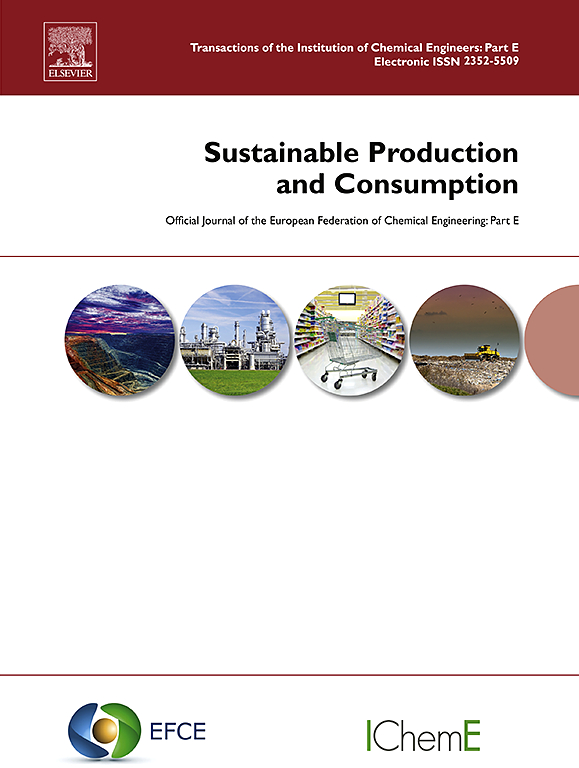综合海水淡化和盐水处理的价值敏感方法
IF 10.9
1区 环境科学与生态学
Q1 ENVIRONMENTAL STUDIES
引用次数: 0
摘要
向海水淡化与资源回收一体化过渡,尤其是在缺水和缺能地区,需要考虑社会效益和成本的创新方法。这项研究超越了传统的技术经济评估,采用了价值敏感设计(VSD)方法,指导性能指标的选择,并为海水淡化和盐水处理一体化系统的技术方案设计提供信息。VSD 通过将利益相关者的价值直接纳入设计和评估过程,确保方案具有社会相关性。VSD 方法采用了四种技术方案(Sc)进行评估:Sc1)最大限度地回收水;Sc2)和 Sc3)综合海水淡化与盐水处理,以实现最大限度的资源回收(使用不同的配置);Sc4)基于电力的海水淡化,以实现化学回收。技术经济模型使用 Python 实现,以分析这些方案的可行性和性能。建模结果表明,所有方案都能实现零盐水生产。然而,资源回收与温室气体排放之间的权衡是显而易见的。由于电力消耗,盐回收量的增加导致二氧化碳排放量增加(本地)。方案 1 在最大限度提高产水量的同时,最大限度地减少了电能消耗和排放。方案 2 和 3 在水和优质盐生产方面表现最佳。尽管方案 4 的二氧化碳排放量较高,但由于生产化学品,其盈利能力最强。这些发现强调了根据地区需求定制工厂设计的重要性。通过提供对权衡的全面理解,可持续发展分区方法促进了利益相关者的对话,并成为设计可持续海水淡化系统的重要决策工具。本文章由计算机程序翻译,如有差异,请以英文原文为准。
A value-sensitive approach for integrated seawater desalination and brine treatment
The transition to seawater desalination integrated with resource recovery, particularly in water- and energy-scarce regions, requires innovative approaches that consider societal benefits and costs. This study goes beyond traditional techno-economic evaluations by employing a Value-Sensitive Design (VSD) approach, which guides the selection of performance indicators and informs the design of technical scenarios for integrated seawater desalination and brine treatment systems. VSD ensures that the scenarios are socially relevant by directly incorporating stakeholder values into the design and assessment process. Four technical scenarios (Sc) were used to evaluate the VSD approach: Sc1) maximum water recovery, Sc2) and Sc3) integrated desalination with brine treatment for maximum resource recovery (using different configurations) and Sc4) electricity-based desalination for chemical recovery. Techno-economic models are implemented using Python to analyse the feasibility and performance of these scenarios. The modelling results indicate that all scenarios achieve zero brine production. However, the trade-offs between resource recovery and greenhouse gas emissions are evident. Increased salt recovery leads to higher CO2 emissions (locally) due to electricity consumption. Scenario 1 minimized electrical energy consumption and emissions while maximizing water production. Scenarios 2 and 3 performed best in water and high-quality salt production. Despite its higher CO2 emissions, Scenario 4 proved most profitable due to the production of chemicals. These findings highlight the importance of tailoring plant designs to regional needs. By providing a comprehensive understanding of trade-offs, the VSD approach fosters stakeholder dialogue and serves as a valuable decision-making tool for designing sustainable desalination systems.
求助全文
通过发布文献求助,成功后即可免费获取论文全文。
去求助
来源期刊

Sustainable Production and Consumption
Environmental Science-Environmental Engineering
CiteScore
17.40
自引率
7.40%
发文量
389
审稿时长
13 days
期刊介绍:
Sustainable production and consumption refers to the production and utilization of goods and services in a way that benefits society, is economically viable, and has minimal environmental impact throughout its entire lifespan. Our journal is dedicated to publishing top-notch interdisciplinary research and practical studies in this emerging field. We take a distinctive approach by examining the interplay between technology, consumption patterns, and policy to identify sustainable solutions for both production and consumption systems.
 求助内容:
求助内容: 应助结果提醒方式:
应助结果提醒方式:


